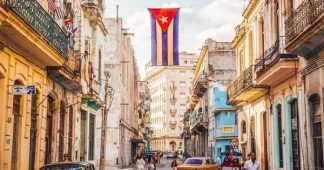Revolutions during the 1820s included revolutions in Russia (Decembrist revolt), Spain, Portugal, and Italy for constitutional monarchies, and for independence from Ottoman rule in Greece. Unlike the revolutionary wave in the 1830s, these tended to take place in the peripheries of Europe.[1]
Timeline
- 1820: in Spain
- 1820: in Portugal
- 1820: in Italy
- 1821 – 1830: Greek War of Independence
- 1825: the Decembrist revolt in Russia
- 1828: the Decembrist revolution in Argentina
Europe
Italy
Main article: Carbonari
The 1820 revolution began in Sicily and in Naples, against King Ferdinand I of the Two Sicilies, who was forced to make concessions and promise a constitutional monarchy. This success inspired Carbonari in the north of Italy to revolt too. In 1821, the Kingdom of Sardinia (Piedmont) obtained a constitutional monarchy as a result of Carbonari’s actions, as well as other reforms of liberalism.The Holy Alliance would not tolerate this state of affairs and decided in October 1820 to intervene. In February 1821, it sent an army to crush the revolution in Naples. The King of Sardinia also called for Austrian intervention. Faced with an enemy overwhelmingly superior in number, the Carbonari revolts collapsed and their leaders fled into exile.
Spain
Main articles: Trienio Liberal and Hundred Thousand Sons of Saint Louis
Colonel Rafael del Riego led a large part of the Spanish army in a mutiny, demanding that the liberal constitution of 1812 be restored. King Ferdinand VII agreed, but secretly asked for aid from the Congress system which, in the Congress of Verona of 1822, agreed to have France send 100,000 troops, which promptly defeated Riego’s forces and reinstalled an absolute monarchy. This period was known as the Trienio Liberal. [2]
Portugal
Main article: Liberal Revolution of 1820
The Liberal Revolution of 1820 began with a military insurrection in the city of Porto, in northern Portugal, that quickly and peacefully spread to the rest of the country. The Revolution resulted in the return in 1821 of the Portuguese Court to Portugal from Brazil, where its members had fled during the Peninsular War, and initiated a constitutional period in which the 1822 Constitution was ratified and implemented.[3]
According to Kenneth Maxwell, “the important point about Brazil is that it became economically and politically emancipated between 1808 and 1820 while acting as the centre of the Luso-Brazilian Empire”, meaning Brazil’s independence was proclaimed after the nation had had an “imperial-like” experience.
“This unusual circumstance explains why in 1820 it was Portugal that declared independence from Brazil, and only afterwards, that Brazil declared its independence from Portugal”, as one may read in the Manifesto issued by the rebels in Oporto in 1820:
“[…] The idea of the status of a colony to which Portugal in effect is reduced afflicts deeply all those citizens who still conserve a sentiment of national dignity. Justice is administered from Brazil to the loyal people in Europe […]”[4]
Russia
Main article: Decembrist revolt
The Decembrist revolt or the Decembrist uprising (Russian: Восстание декабристов, romanized: Vosstanie dekabristov, lit. ‘Uprising of the Decembrists’) took place in Imperial Russia on 26 December [O.S. 14 December] 1825. Russian army officers led about 3,000 soldiers in a rejection of Emperor Nicholas I‘s assumption of the throne hours before, as Nicholas’s elder brother Constantine had removed himself (non-publicly) from the line of succession. Because these events occurred in December, the rebels became known as the Decembrists (Russian: Декабристы, romanized: Dekabristy).
Latin America
Argentina
Main article: Decembrist revolution (Argentina)
The Decembrist revolution (Spanish: Revolución decembrina) was a military coup in the Buenos Aires Province, Argentina. Juan Lavalle, returning with the troops that fought in the Argentine-Brazilian War, performed a coup on December 1, 1828, capturing and killing the governor Manuel Dorrego and ultimately closing the legislature. The rancher Juan Manuel de Rosas organized militias that fought against Lavalle and removed him from power, restoring the legislature. However, as the coup had reignited the Argentine Civil Wars, Rosas was appointed governor of the Buenos Aires province to wage the war against the Unitarian League. José María Paz made from Córdoba a league of provinces, and so did Rosas. The conflict ended a short time after the unexpected capture of Paz, who mistook enemy troops for his own.
References
- James H. Billington, Fire in the Minds of Men: Origins of the Revolutionary Faith, Transaction Publishers, 2011, p. 148: “Whereas the revolutions of 1820 had occurred in traditional societies (Spain, southern Italy, Greece, and Russia), the revolutions of 1830 affected regions where the workings of a market economy were relatively advanced…”
- “Revolutionary Spain by Karl Marx”. Marxists.org. Retrieved 15 October 2013.
- “Centenario do Revolução de 1820”. Gutenberg.org. 21 April 2008. Retrieved 15 October 2013.
- [1]
Published at en.wikipedia.org











